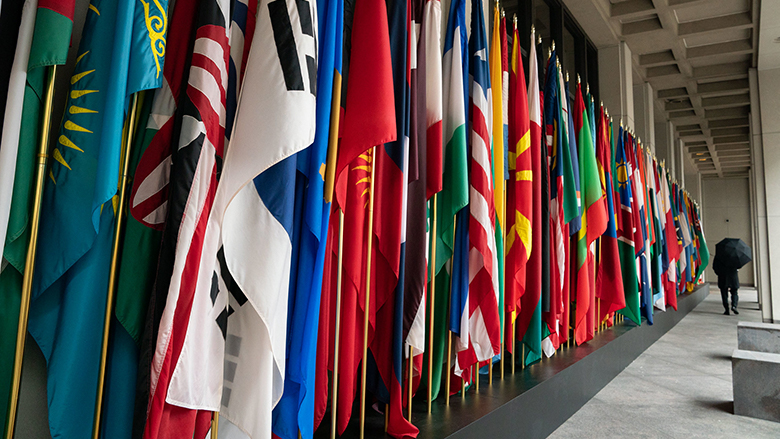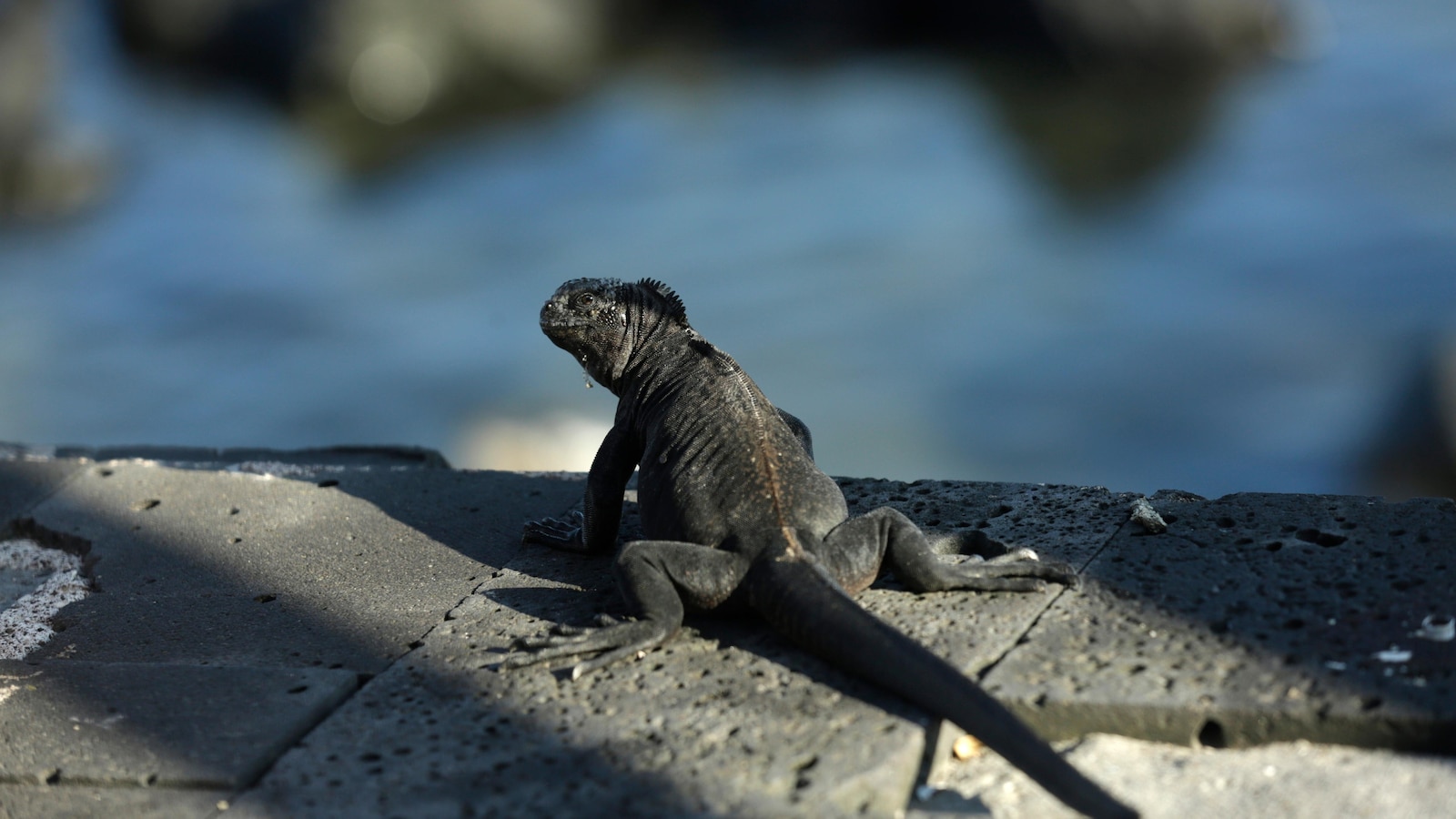World Bank Backs Moldova’s Ecosystem Restoration Plan – Mirage News

World Bank Grant for Moldova’s Ecosystem Restoration Project: A Commitment to Sustainable Development Goals
Project Authorization and Funding
On October 22, 2025, the World Bank’s Board of Executive Directors authorized a US$7.9 million grant for the Restoring Ecosystems for Marine Pollution Prevention Project (RE-MAP) in Moldova. This investment, financed through the Global Environment Facility (GEF), represents a significant commitment to achieving multiple Sustainable Development Goals (SDGs) within the region.
Strategic Objectives and SDG Alignment
The RE-MAP project is designed to increase the application of sustainable landscape management practices within the Dniester River Basin. This initiative directly supports several key SDGs through its focus on nature-based solutions to restore degraded landscapes, prevent land-based pollution, and enhance biodiversity.
- SDG 15 (Life on Land): The project’s core mission is to restore terrestrial ecosystems and halt biodiversity loss through afforestation and sustainable land management.
- SDG 14 (Life Below Water): By preventing land-based pollution in the Dniester River Basin, the project actively contributes to the reduction of marine pollution, a primary target of this goal.
- SDG 6 (Clean Water and Sanitation): Protecting the Dniester watershed is crucial for safeguarding Moldova’s water resources, ensuring the availability and sustainable management of water.
- SDG 13 (Climate Action): The use of nature-based solutions and ecosystem restoration enhances climate resilience, contributing to climate change mitigation and adaptation efforts.
Key Project Components
The project’s implementation is structured around four main components, each contributing to specific sustainable development outcomes:
- Ecosystem Restoration and Management: This includes forest and wetland restoration, afforestation, and the implementation of integrated crop-livestock-forest systems, directly advancing SDG 15 and SDG 13.
- Policy and Governance Enhancement: The project will support policy harmonization for pollution prevention and sustainable land use, creating a robust framework for long-term environmental protection in line with SDG 6 and SDG 14.
- Institutional and Community Capacity Building: Strengthening the ability of local institutions and communities to implement and monitor restoration efforts ensures the project’s sustainability and local ownership.
- Socio-Economic Development and Inclusivity: The project is projected to provide direct socio-economic benefits to approximately 99,200 people through improved natural resource conditions and new employment opportunities, supporting SDG 8 (Decent Work and Economic Growth). A key target is ensuring that 40 percent of these beneficiaries are women, directly addressing SDG 5 (Gender Equality).
Partnership for the Goals
This initiative is a clear example of SDG 17 (Partnerships for the Goals), demonstrating effective cooperation between the Government of Moldova, the World Bank, and the Global Environment Facility. It is part of the broader Clean and Healthy Ocean Integrated Program, highlighting a coordinated regional effort to combat environmental degradation. The project builds upon a long-standing partnership, with the World Bank having allocated over US$2.3 billion to more than 70 operations in Moldova since 1992, fostering comprehensive and sustainable development across multiple sectors.
Analysis of Sustainable Development Goals in the Article
1. Which SDGs are addressed or connected to the issues highlighted in the article?
-
SDG 6: Clean Water and Sanitation
The project focuses on the Dniester River Basin, a critical watershed, and aims to prevent land-based pollution, which directly impacts water quality and the health of water resources.
-
SDG 13: Climate Action
The article explicitly states that a goal of the RE-MAP project is to “enhance… climate resilience” through nature-based solutions like ecosystem restoration.
-
SDG 14: Life Below Water
The project is named the “Restoring Ecosystems for Marine Pollution Prevention Project” and is part of the “Clean and Healthy Ocean Integrated Program,” directly addressing the issue of land-based pollution affecting marine environments.
-
SDG 15: Life on Land
This is a central theme, with the project’s primary aim being to “increase the area under sustainable landscape management practices,” “restore degraded landscapes,” and enhance biodiversity through “Forest and wetland restoration, afforestation.”
-
SDG 5: Gender Equality
The project specifies that its socio-economic benefits will reach “approximately 99,200 people, including 40 percent women,” indicating a conscious effort to include and empower women.
-
SDG 8: Decent Work and Economic Growth
The article mentions that the project will provide “employment opportunities” as part of its socio-economic benefits, contributing to economic growth and decent work.
-
SDG 17: Partnerships for the Goals
The project is a partnership between the World Bank, the Global Environment Facility (GEF), and Moldova. It also includes “Capacity building for institutions and communities” and “Policy harmonization,” which are key aspects of building strong partnerships for sustainable development.
2. What specific targets under those SDGs can be identified based on the article’s content?
-
Target 6.6: By 2020, protect and restore water-related ecosystems, including mountains, forests, wetlands, rivers, aquifers and lakes.
- The project’s focus on the Dniester River Basin and its key components, such as “Forest and wetland restoration,” directly align with this target of restoring water-related ecosystems.
-
Target 13.1: Strengthen resilience and adaptive capacity to climate-related hazards and natural disasters in all countries.
- The article states that the project will “enhance biodiversity and climate resilience,” which is the core objective of this target.
-
Target 14.1: By 2025, prevent and significantly reduce marine pollution of all kinds, in particular from land-based activities, including marine debris and nutrient pollution.
- The project’s title and stated goal to “prevent land-based pollution” as part of a broader program to combat marine pollution directly address this target.
-
Target 15.3: By 2030, combat desertification, restore degraded land and soil, including land affected by desertification, drought and floods, and strive to achieve a land degradation-neutral world.
- The project’s aim to “restore degraded landscapes” and increase “sustainable landscape management practices” is a direct implementation of this target.
-
Target 5.5: Ensure women’s full and effective participation and equal opportunities for leadership at all levels of decision-making in political, economic and public life.
- The specific mention that 40% of the 99,200 beneficiaries will be women points to an intentional effort to ensure their participation in and benefit from the project’s economic opportunities.
-
Target 8.5: By 2030, achieve full and productive employment and decent work for all women and men, including for young people and persons with disabilities, and equal pay for work of equal value.
- The article’s reference to creating “employment opportunities” through the project contributes to this target.
-
Target 17.9: Enhance international support for implementing effective and targeted capacity-building in developing countries to support national plans to implement all the sustainable development goals.
- The project includes a component for “Capacity building for institutions and communities to implement and monitor restoration efforts,” which is a clear example of this target in action.
3. Are there any indicators mentioned or implied in the article that can be used to measure progress towards the identified targets?
-
Area under sustainable management
- The article explicitly states the project aims to “increase the area under sustainable landscape management practices.” This can be measured in hectares and directly relates to indicators like 15.1.1 (Forest area as a proportion of total land area) and 15.3.1 (Proportion of land that is degraded over total land area).
-
Number of beneficiaries
- The article provides a specific number: “Socio-economic benefits for approximately 99,200 people.” This is a quantitative indicator to measure the project’s social and economic reach.
-
Percentage of female beneficiaries
- The specific mention of “40 percent women” among the beneficiaries serves as a clear indicator for measuring gender equality and women’s inclusion in the project’s benefits, relevant to SDG 5.
-
Extent of ecosystem restoration
- While not quantified, the components of “Forest and wetland restoration, afforestation” imply that progress can be measured by the area (in hectares) of ecosystems restored, which relates to indicator 6.6.1 (Change in the extent of water-related ecosystems over time).
-
Number of employment opportunities created
- The mention of “employment opportunities” implies that the number of jobs created by the project is a key performance indicator for measuring its contribution to SDG 8.
4. SDGs, Targets, and Indicators Summary
| SDGs | Targets | Indicators (Mentioned or Implied in Article) |
|---|---|---|
| SDG 6: Clean Water and Sanitation | 6.6: Protect and restore water-related ecosystems. | Area of wetland and river basin ecosystems restored. |
| SDG 13: Climate Action | 13.1: Strengthen resilience and adaptive capacity to climate-related hazards. | Implementation of nature-based solutions to enhance climate resilience. |
| SDG 14: Life Below Water | 14.1: Prevent and significantly reduce marine pollution from land-based activities. | Reduction in land-based pollution flowing into the marine environment. |
| SDG 15: Life on Land | 15.3: Combat desertification, restore degraded land and soil. | Increased area under sustainable landscape management; Area of degraded landscapes restored. |
| SDG 5: Gender Equality | 5.5: Ensure women’s full and effective participation and equal opportunities. | Percentage of women among project beneficiaries (specified as 40%). |
| SDG 8: Decent Work and Economic Growth | 8.5: Achieve full and productive employment and decent work for all. | Number of employment opportunities created. |
| SDG 17: Partnerships for the Goals | 17.9: Enhance international support for effective and targeted capacity-building. | Implementation of capacity-building programs for institutions and communities. |
Source: miragenews.com
What is Your Reaction?
 Like
0
Like
0
 Dislike
0
Dislike
0
 Love
0
Love
0
 Funny
0
Funny
0
 Angry
0
Angry
0
 Sad
0
Sad
0
 Wow
0
Wow
0















































/environment-climate-change-and-health-(ech)/water-sanitation-hygiene-and-health-(wsh)/landfill-tuvalu-36092.tmb-1200v.jpg?sfvrsn=5c21fe40_1#)


.jpg.webp?itok=0ZsAnae9#)
























